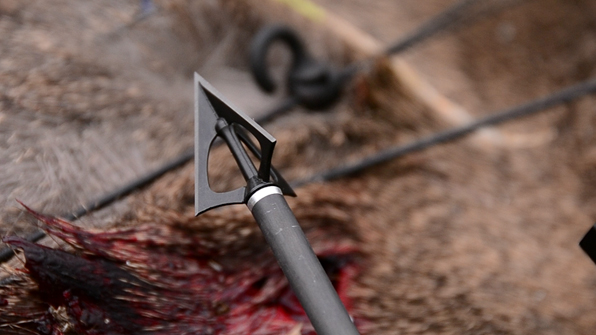LAST UPDATED: May 1st, 2015
Like many things in life, bowhunting is a skill that’s best learned through experience. You can be the most skilled target archer on the planet. But until you’ve been in the wild, drawn your bow on a deer, elk, antelope, whatever, and released an arrow, you don’t know jack about bowhunting. I can’t list all of the things I’ve learned about bowhunting through real-life experience. For example, when it’s safe to move on an antelope or when it’s not. What a good tree looks like for hanging a whitetail stand. What an arrow and blood trail look like after a killing shot or what they look like after a bad shot….and on and on. You can read stacks of articles and books on these subjects — and it’s never bad to do so — but until you live it, you can’t fully comprehend the real-world applications of the lessons. (whitetail lessons)
Every time you go afield you learn something new, even when the weapon in your hand is a familiar one.
I was reminded of the power of experience recently on a winter bowhunt for hogs in Georgia. I’d killed several hogs over the years with various firearms. But never with a bow. Still, I’ve shot lots and lots of deer with my bow, so how much different could this be? My new Mathews Creed was dialed in and driving tacks in the weeks preceding my hunt. (Creed Bow review) So my shooting skills were razor-sharp when I climbed into the stand the first evening. The metal ladder was perched at the top of a slight hill, on the edge of a field, overlooking a clearing in the swamp thicket below the field. If the hogs passed through the clearing on their way to the cut cornfield, I’d have a 28-yard shot. No problem.
Hogs offer plenty of action and may seem like an “easy kill”. However, until you’ve actually hunted them, you never really know what to expect.
About 30 minutes before sunset, I heard squeals and grunts in the dense cover to the left of the clearing. I grabbed my bow, clipped my release to the string and readied myself for a shot. Soon, I could see several black objects through small openings in the brush. All were headed on the trail that ran right through my shooting lane. Several small hogs scampered through first. I let them pass, knowing from past experiences that the big ones always bring up the rear. When a decent boar stopped in the open to rub its side on a tree, I drew my bow and took aim. I held my 30-yard pin low, so that my arrow would hit behind the shoulder, at about the mid-point below the top of the hog’s back and above the bottom of its belly. That’s precisely where the arrow hit. Dead hog walking, I figured. (hog hunting tips)
Hogs Aren’t Deer
Had it been a deer, I would have bet my house I’d have found my arrow soaked with blood, and the deer wouldn’t have gone more than 50 yards before piling up. But this wasn’t a deer. This was a hog. I couldn’t believe my eyes when I recovered my arrow and saw it was clean as a whistle, except for a coating of clear grease. Having shot more than a few deer in what I call the “dead zone” — the meaty gap above a deer’s vitals and below its spine — the arrow told me I had not scored a fatal hit; in fact quite the contrary.
Shot placement is always more critical when using archery tackle; especially on wild hogs. Due to the location of the vitals and a pesky defensive trait called a “shield”, special attention must be given to your aiming point before loosing an arrow.
Such hits on deer — even complete pass-throughs — are just flesh wounds. My guide arrived a short time later and confirmed my analysis. “That hog’s fine,” he said. “All you did was sting him a bit.” I explained to my guide where I aimed and where the arrow hit. I told him I couldn’t understand the results. That’s when he told me a hog’s vitals are lower and much farther forward in the chest cavity than a deer’s. I knew that information beforehand, but, having never shot a hog with a bow before, I didn’t know just how much different a hog’s vital area is from a deer’s. (When hunting with a gun, I always aim for the head.) Basically, I should have shot about 2 inches above the belly line, directly through the center of the shoulder, or even a bit farther toward the neck. My shot had hit the hog’s “dead zone.” (hog hunting destinations)
When tackling hogs, or any other tough game, you need tough equipment; namely broadheads. Pictured above is the NAP HellRazor. An all-steel, one piece, shaving sharp, fixedblade head that will hold up to any “shield” that gets in its way.
Hogs — especially boars – have a thick layer of gristle and fat called a shield covering both shoulders. When the hogs fight, those areas take a beating, and so they have shields for protection. You might send an arrow through the shield of a smaller hog, but the penetration is likely to be poor if you try to shoot through the shield of a big boar, my guide told me. The best thing to do, he said, is to wait for a quartering-away shot, and try to slip an arrow up into the vital area between the shoulders, from behind the shield. That information will help me the next time I bowhunt for hogs. But I won’t really know what such a shot looks like until I take it. For now, all I know for certain is where NOT to shoot a hog.

 By
By 




